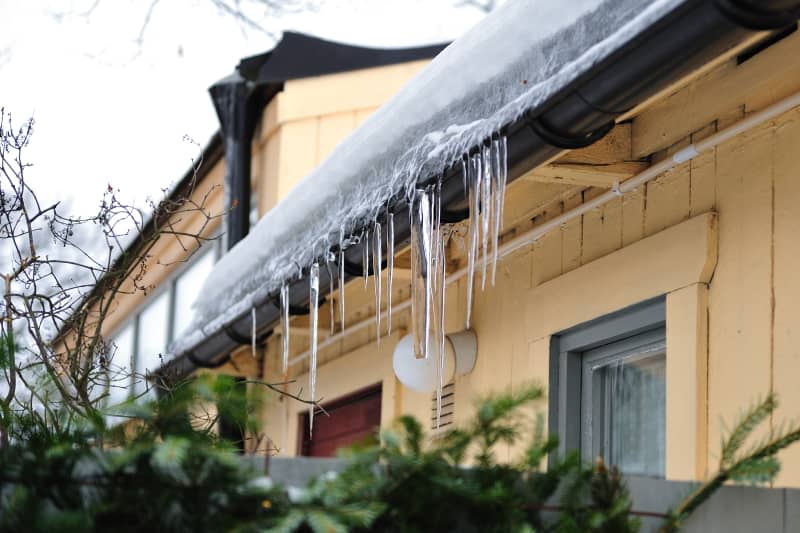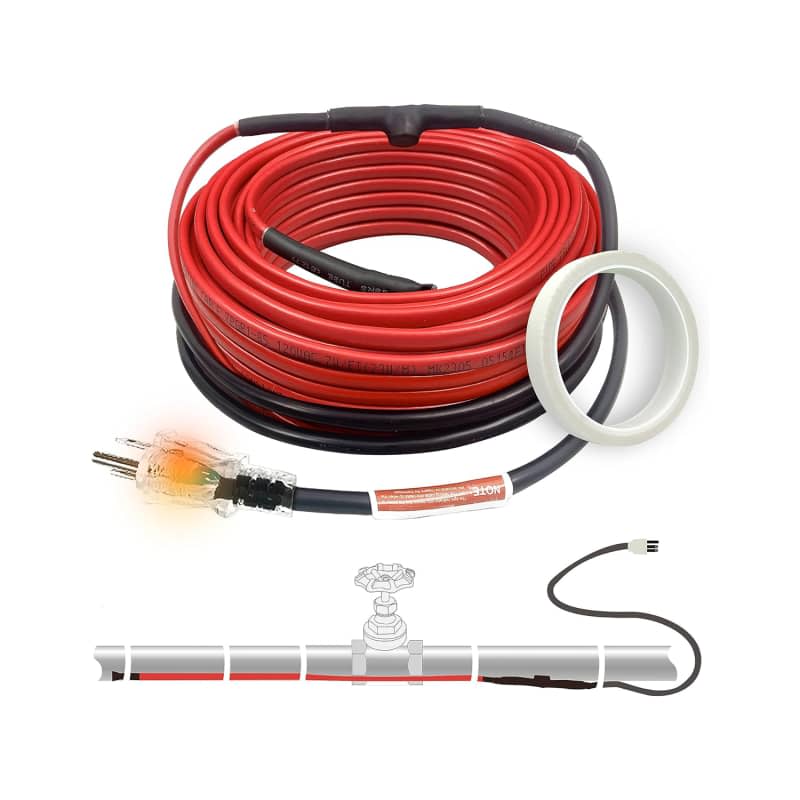The $20 Gadget Plumbers Swear by to Keep Kitchen Pipes from Freezing (Plus, 3 More Expert Tips)

When I decided to go to the Arctic on vacation over New Year’s, I never expected the single-digit (and well-below-zero) temps to follow me home to Kentucky! But when the recent Arctic blast made waves around the country with brutally cold temperatures, I — along with many of you, I’m sure — had to deal with the ensuing damage. Namely: frozen pipes. And with those burst pipes (because water expands when it freezes), there’s also the collateral damage of the explosions, and things getting wet that shouldn’t be.
Places like the literal Arctic are better prepared for extremes like this than most of us. Still, I remembered from when my parents taught me to leave the faucets dripping at night, and thought we’d be OK just doing that, even as temperatures plunged to zero for several days in January. Turns out that wasn’t enough to prevent our pipes from freezing. Our kitchen sink, dishwasher, and washing machine (all along the same exterior wall in our 140-year-old house) all froze solid. For several days in a row. And I heard the same woes from many friends nearby.
Everyone I talked to had advice for how to prevent this in the future. My favorite? My dad said when we lived in a drafty old farmhouse when I was little, he surrounded the foundation with bales of hay! Because I don’t have easy access to hay bales, I reached out to a pro for some expert advice. Mehdi Khachani is a plumbing expert and CEO of JMK Plumbing in Miami — but he lived in Montreal for several years, so is quite experienced with extreme cold. He’s also an engineer by training, so brings a wealth of expertise to the subject. Here’s what he shared.
How to Prevent Your Pipes from Freezing in Winter
1. Know that insulation is key.
The best solution to pipes freezing is to prevent it from happening in the first place by insulating the house properly, Khachani says. We’ll file that under, well, of course. And, in fact, my plumber required that we add a false wall behind the washing machine on the exterior wall for the purpose of adding insulation. Unfortunately, that little bit, intended for a fairly mild climate, didn’t cut it when things got real. Especially since the back door (that’s opened a dozen times a day to let the dogs out) sits right next to the machine.
So if you live somewhere without adequate insulation and it’s not feasible to add it, what then?
2. Seal gaps and cracks.
The name of the game is keeping the cold out everywhere you can. “Sealing any gaps or cracks in your home’s foundation and walls can significantly reduce the chances of cold air infiltrating and affecting your pipes,” Khachani says, recommending weather-stripping or caulk to seal these openings.
But does that really matter if, like I said, doors are opening and closing? Yes! Your house can warm back up after you close the door, he explained, but not if it’s full of small openings, which create a constant source of cold.
3. Let the faucet drip.
Khachani called this old-timey method an effective myth. It can help, he says, but not everyone wants to leave their water running and increase their water usage — not to mention, it can feel wasteful. It’s also not foolproof, as I found. While we left faucets dripping at night, the days were nearly as cold, and that’s when everything froze.
The way this works (when it does!) is that moving water is simply harder to freeze. In smaller homes, leaving just one faucet going should be enough to keep it all moving, but in larger homes, Khachani says, you may want to turn on a few taps.
4. Harness the power of heat tape.
It turns out there’s a way Khachani recommends to specifically keep your pipes at a temperature that will protect them from freezing: heat tape, also called heat cable. “Wrap the heat tape around exposed pipes, and it will provide a controlled amount of heat to keep them above freezing temperatures,” he says. “Ensure you follow the manufacturer’s instructions for proper installation.”
MAXKOSKO Pipe Heat Cable for Water Freeze Protection
Where do you use this stuff? Anywhere you can access exposed pipes, Khachani suggests. Whether that’s under your sink, in your basement or crawlspace, or anywhere else a pipe is exposed, the pipe can benefit from this tape. That includes the lines running to appliances like washing machines. This highly rated Amazon cable option starts at just $19.99.
The thing with heat cable is that it must be plugged in, so you’ll need to install it in a place with access to an outlet. In a pinch, Khachani says, it’s OK to use an extension cord. If you can’t access critical lines yourself, that’s when you can call a pro, he notes. And, he says, it doesn’t even have to be a plumber. Handy people found on platforms like Thumbtack can perform installation in tricky-to-reach areas like crawlspaces.
Even if you have to pay a pro, at the end of the day that’s going to be less costly, and certainly less disruptive, than frozen pipes the next time the Arctic comes to visit.
Buy: MAXKOSKO Pipe Heat Cable for Water Freeze Protection, $19.99


